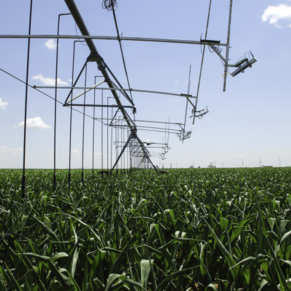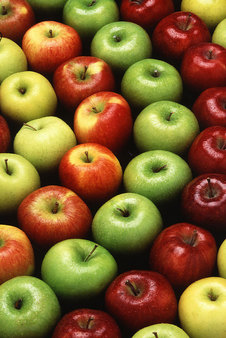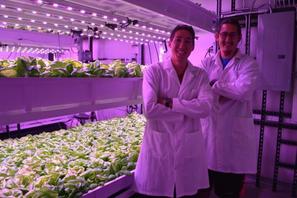|
Having trouble viewing this email? View it as a Web page.

|
|
|
Fresh from the
Field is a weekly album showcasing transformative impacts made by
partners supported by the National Institute of Food and Agriculture.
Editor: Falita Liles
April 5, 2018
|
|
Success Stories

Automatic Irrigation in the Field
Researchers at USDA’s
Agricultural Research Service were part of a team of engineers who created the
wireless sensor-based decision-support system that may help automate
application rates to specific areas of a crop field by using
real-time data on pivots equipped with variable-rate irrigation technology.
The researchers who
developed it call their innovative breakthrough the Scheduling Supervisory
Control and Data Acquisition, or ISSCADA. It could well be termed Automatic
Irrigation, as the system allows “applying the right amount of water at the
right time and in the right location in a field,” explained Susan
O’Shaughnessy, an agricultural engineer.
NIFA supports this project through the Agriculture and Food Research
Initiative.
Read the full story at Successful Farming. USDA photo by Nancy Davis.
|
News Coverage

Apple
Fungus Spoils Food despite Pasteurization
New York is the second-largest
apple grower in the U.S. and is the No.1 producer of processed apple products,
such as cider, juice, and canned apples.
Given this appreciation
for apples, consumers might be concerned by reports from food scientists at
Cornell University of a fungus, Paecilomyces
niveus, which spoils apple products even after heat pasteurization. The
fungus also produces an FDA-regulated toxin called patulin, which is found in
these spoiled processed foods.
A new study describes for
the first time a new apple disease, Paecilomyces rot, caused by the
little-studied fungus. Though food scientists have attributed P. niveus in foods to soil
contamination, the study’s authors, doctoral student Megan Biango-Daniels and
Cornell mycologist Kathie Hodge, now think infected apples may be the true
source.
NIFA supports this
research with the Hatch Act.
Read the full article at the Cornell
Chronicle. USDA photo.
|
The Library
 Our Farms, Our Future
The theme of the NIFA-funded
Sustainable Agriculture Research and Education (SARE) 30th Anniversary Report
is “Our Farms, Our Future.” Taken together, the thousands of men and women who
received SARE grants and shaped SARE priorities over the years have one
objective in common: making American agriculture stronger and more sustainable.
“Our Farms, Our Future” highlights local and national SARE investments that
contribute to critical areas as water conservation, grazing management, soil
health, local market opportunities, rural development and the human dimensions
of food production.
Read the “Our Farms, Our Future” report
online. USDA
photo.
|
Video
 Using
Space-Age Technology for Down-to-Earth Agriculture
Similar to what Matt Damon
portrayed in the movie The Martian, astronauts can successfully grow enough food to sustain
themselves in orbit or on another planet.
Researchers in Antarctica have been doing the same since 2004 in an environment
where the average yearly temperature is minus 56 F. One of the researchers
involved in these extreme environment success stories says that local
communities can also benefit from controlled environment agriculture.
Dr. Gene Giacomelli,
professor of agricultural and biosystems engineering at the University of
Arizona, leads an internationally recognized, one-of-a-kind research and
education program at the university’s Controlled Environment Agriculture Center.
Their studies and applications focus on the technical, and practical and
business development aspects of designing, monitoring, managing, modeling and
optimizing crop production.
Read the blog and watch the video online. Photo credit: Austin Smith.
|
Tweet of the Week
#NIFAIMPACTS

|
|

NIFA’s mission is to invest in and advance agricultural research, education, and extension that solve societal challenges. NIFA’s investments in transformative science directly support the long-term prosperity and global preeminence of U.S. agriculture. To learn more about NIFA’s impact on agricultural sciences, visit www.nifa.usda.gov/Impacts, sign up for email updates or follow us on Twitter @USDA_NIFA, #NIFAImpacts.
USDA is an equal opportunity lender, provider, and employer.
|
|